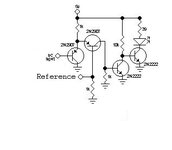neazoi
Advanced Member level 6
Hi, I am looking at Fig. 15 (non coherent fsk demodulation) of the pdf.
Since UART in idle state is logic HI (+5v) and FSK-mark is logic HI and it is present when idle, I wonder, can I just assume the MARK and detect only the SPACE?
This will need only one filter on Fig. 15, the SPACE filter. The space detector would then just bring the UART voltage from +5v down to 0v when a SPACE is detected.
Since UART in idle state is logic HI (+5v) and FSK-mark is logic HI and it is present when idle, I wonder, can I just assume the MARK and detect only the SPACE?
This will need only one filter on Fig. 15, the SPACE filter. The space detector would then just bring the UART voltage from +5v down to 0v when a SPACE is detected.
